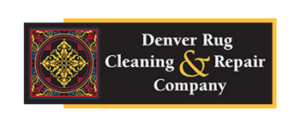Why is my rug curling?
Rugs are a great addition to any home décor, but sometimes they can be frustrating to deal with. One common problem that many people face is rug curling. This happens when the edges of the rug curl up or curl under, making it difficult to lay flat on the floor. Rug curling can be caused by several factors, and understanding the cause is key to finding a solution.
- Poor Quality Rug Pad One of the most common reasons for rug curling is the use of a poor-quality rug pad. A rug pad is important because it helps to keep the rug in place and prevent it from slipping or sliding. However, if the rug pad is too thin or made of low-quality materials, it may not be able to provide enough support to keep the rug flat on the floor. As a result, the edges of the rug may curl up or under.
- Humidity and Moisture Humidity and moisture can also cause rug curling. When the air is humid or the rug is exposed to moisture, the fibers of the rug can absorb the moisture and expand. This can cause the edges of the rug to curl up or under, making it difficult to lay flat on the floor.
- Heavy Furniture Heavy furniture can also cause rug curling. When furniture is placed on a rug, it can compress the fibers and cause the rug to buckle or curl. Over time, this can lead to permanent damage to the rug.
- Improper Cleaning Improper cleaning can also cause rug curling. Using too much water or harsh chemicals can damage the fibers of the rug, causing them to curl up or under. It is important to use a gentle cleaning method that is appropriate for the type of rug you have.
- Age and Wear Finally, age and wear can also cause rug curling. Over time, the fibers of the rug can become worn and weakened, causing them to curl up or under. This is especially true for rugs that are placed in high-traffic areas, such as hallways or entryways.
What Can You Do About Rug Curling? If you are dealing with rug curling, there are several steps you can take to address the problem:
- Use a High-Quality Rug Pad If you are using a poor-quality rug pad, consider upgrading to a high-quality pad. A good rug pad should be thick and durable, with a non-slip backing to keep the rug in place. This will help to provide the support your rug needs to lay flat on the floor.
- Control Humidity and Moisture To prevent humidity and moisture from causing rug curling, it is important to control the environment in which the rug is placed. Use a dehumidifier to keep the air dry, and avoid placing the rug in areas that are prone to moisture, such as bathrooms or basements.
- Move Heavy Furniture If heavy furniture is causing rug curling, consider moving the furniture to a different location or using furniture pads to distribute the weight more evenly.
- Clean the Rug Properly To prevent rug curling caused by improper cleaning, use a gentle cleaning method that is appropriate for the type of rug you have. Follow the manufacturer’s instructions carefully, and avoid using too much water or harsh chemicals.
- Consider Professional Restoration If your rug is old or heavily worn, it may be time to consider professional restoration. A professional rug cleaner can assess the damage and recommend the best course of action, which may include repair or replacement of the rug.


